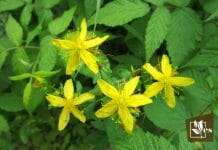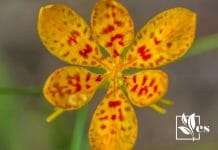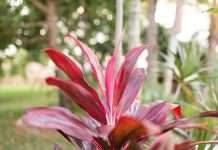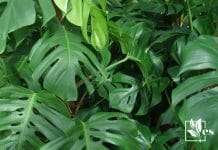Plants that look like wheat are a puzzling phenomenon in the garden. When it comes to this staple food-bearing plant, gardeners experience problems with identification and often leave unwanted plants growing.
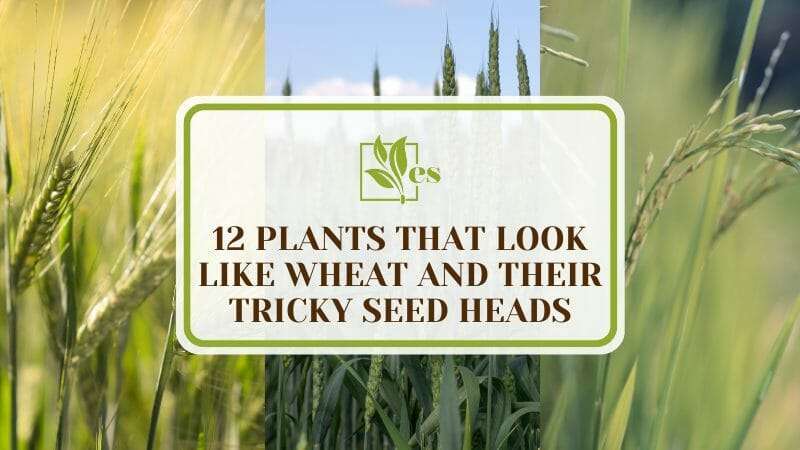
Wheat is a specie of edible grain from the family Triticum, recognized as tall-growing grass plants with characteristic seed heads.
The seeds grow in an alternating or zig-zag pattern – the pattern is unique to more than a dozen plants looking strikingly similar to wheat.
Let us go through them and ensure you never mistake them for wheat grain again!
JUMP TO TOPIC
List of Plants That Look Like Wheat
1. Dallisgrass
This grass-like weed grows in the warmer seasons and is often mistaken for wheat. Dallisgrass is one of the most challenging plants to control on any turf.
They are native plants to South America but are known worldwide as an invasive species – so much so that they are considered a pestilence and are very hard to get rid of.
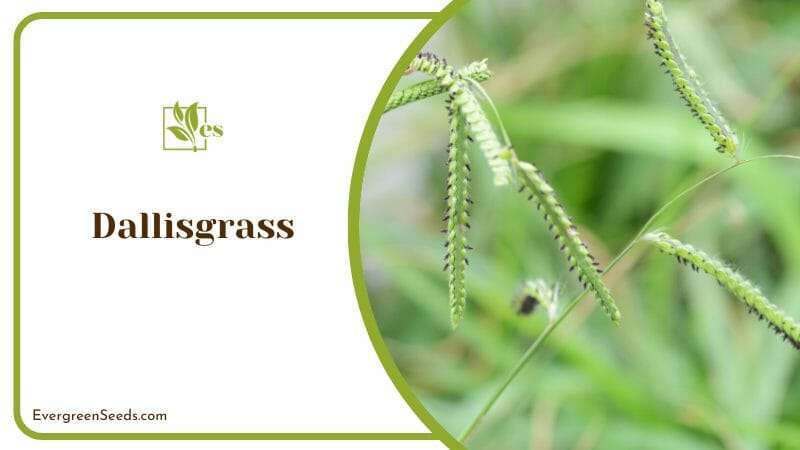
Dallis grass looks like a bushy broadleaf plant similar to wheat off-shots. Even its seeds can look like wheat. However, these plants have relatively fat leaves – a quarter to half an inch. Its strange appearance signals removal time, but the gardeners often leave it, mistaking dallis grass for wheat.
If you’re wondering how to get rid of grass that looks like wheat, it’s probably best to pluck them out as soon as you spot them! You will grow on any type of soil so you should pick the right soil for your grass.
You’ll recognize dallisgrass by its’ fat leaves, shallow root system, and clumping growth. If you’re dealing with this plant, remove it immediately before lawn care becomes a problem.
2. Barnyard Grass
Now, this is the one often mistaken for the wheat plant! Barnyard grass is a widespread plant, and some species are grown as cereal. These annual grass plants aren’t easily cropped, however, and can cause damage to farming equipment and tools. Their stems are very pliable and not easily broken, making them a nuisance to remove if left unchecked.
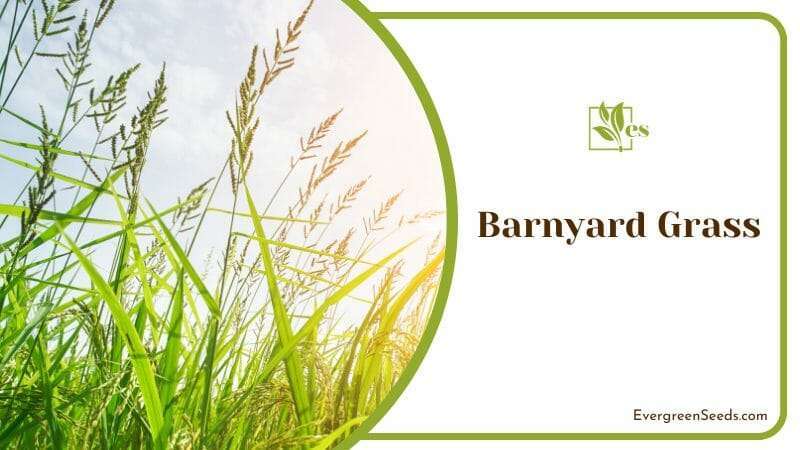
Its leaves are about a quarter of an inch wide, with shots going to about 20 inches high. Its seed heads are very similar to those of wheat. However, the seeds are much smaller and grow on both sides of shots in clumps.
Barnyard grass can spread very fast and become an issue, especially in irrigated and often-flooded areas – the seeds float on water and can travel for miles! This wheat-like plant likes moist and warm conditions. Unfortunately, it can grow in both direct and indirect sunlight.
3. Quack Grass
Quack grass (sometimes referred to as the common couch plant) is a very invasive specie of the tall grasses family. This creeping perennial is commonly mistaken for both wheat and fescue.
This one is an enemy of your garden and can ruin your lawn if left unchecked. Proper lawn care is advisable as no herbicide can destroy this one, so plucking clumps of quack grass often is a proven remedy.
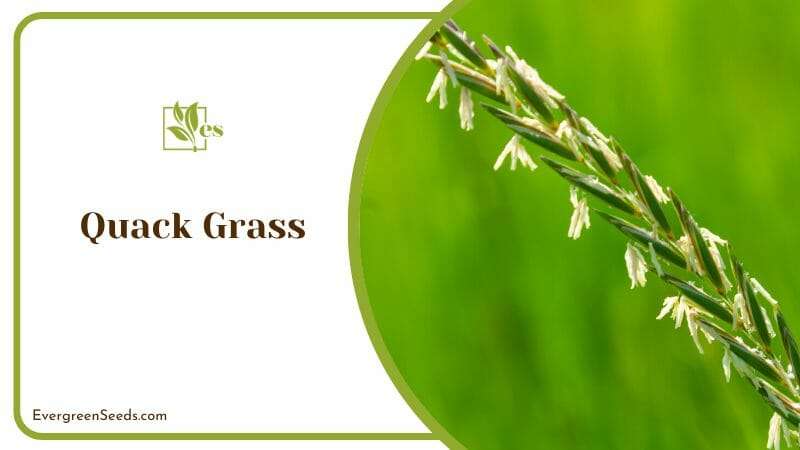
While they don’t pose any health risks to humans or animals, consuming them isn’t advisable. This grass is often mistaken for a wheat plant, as it has wheat-like leaf blades.
Its seed heads are almost the same as wheat, except they are much smaller and slimmer. One thing to remember is when removing this grass (as part of the lawn maintenance routine), be careful not to disturb the seeds, as they can easily fall to the ground, making room for another infestation.
4. Yellow Foxtail
When it comes to plants that look like wheat, yellow foxtail has to be on the list! Foxtails are Europe’s native plants, but they’re known worldwide. Similarly to wheat, this summer annual will grow in a cultivated area, which is why people mistake it for a food crop.
Yellow foxtail is probably the biggest of its family members, growing up to three feet tall! It produces a wheat-like seed head, with seeds growing in clumps.
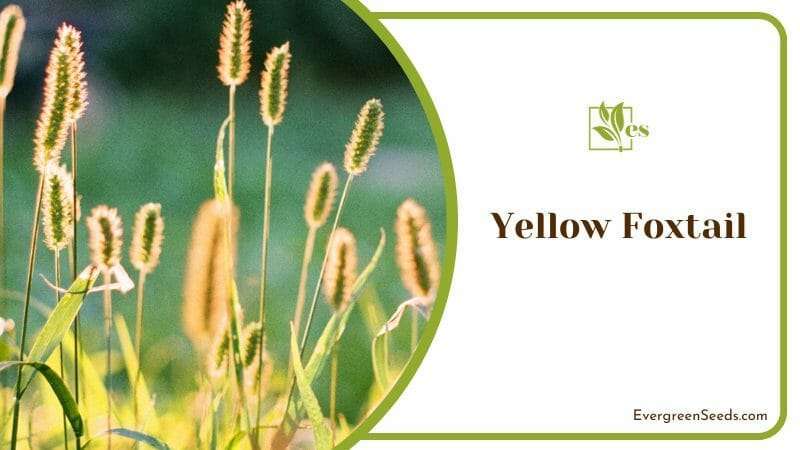
The very head is covered in fluffy hair. So if you notice tiny follicles growing around, you aren’t dealing with wheat but a yellow foxtail.
And you’ve guessed it – this is considered a very invasive specie that will ruin your lawn and garden if left unchecked. However, these plants abstain from appearing in lush and richly planted areas. The best prevention is regular lawn maintenance and introducing herbicides to your lawn.
5. Hare Barley
Of all the plants that look like wheat, hare barley ranks high on the list. These cold-season annual grasses are native to North America, mainly the US and Canada. Hare barley belongs to the family of Poaceae.
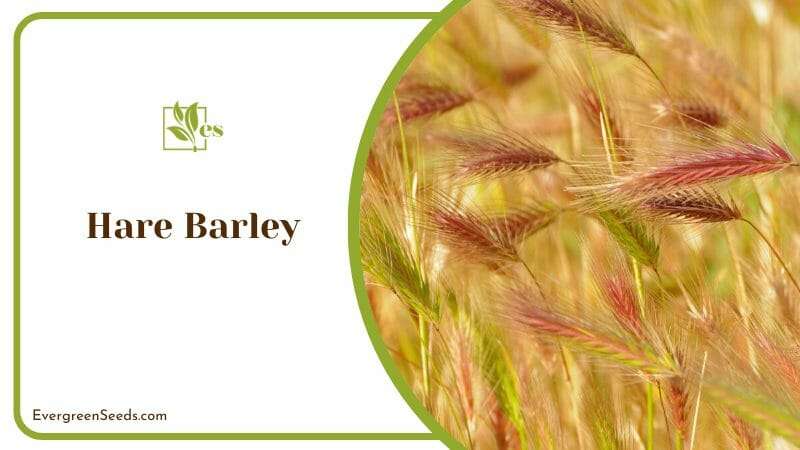
Each of these bares a long spiky seed head with three flower clusters. The flower clusters all bear florets, but what it makes so similar to wheat is the series of lateral sterile spikelets, which make the plant look like grain.
This plant isn’t of much use from an agricultural standpoint, so consider removing it from your lawn. One positive here – if you’re employing good enough lawn care, you should be free of hare barley, as it grows primarily in abandoned and stressed areas.
6. Feather Reed
Feather reed grass is considered an ornamental grass, grown to beautify porches and lawns. It is native to Europe and Asia, although it has gained popularity in the Americas. Feather reed is an annual grass, but it’s appreciated because it’s one of the first plants to bloom in early spring.
Feather reed grass grows about four feet tall, producing pleasantly smelling flower heads in early June.
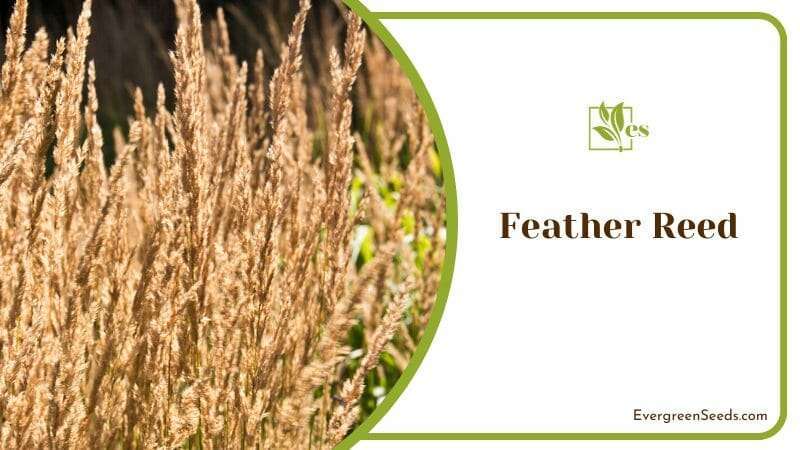
These flowers turn to seeds similar to grain, making the plant look like a wheat plant.
Although it may sound like a good idea, rest assured that you won’t have much use processing these for food, but they’ll be a good ground cover for the patchy area of your garden!
7. Annual Ryegrass
Annual ryegrass is a grass widely used as a winter crop worldwide, although it can become an issue overtaking other cultures you may be growing. These grass plants are native to Europe but are grown all over the globe – a good side crop to plant next to wheat.
Annual ryegrass has shiny green, hairless leaves. The plant grows up to a foot tall with heads of three to nine flowers, bearing a striking resemblance to wheat. The seeds are flat and tightly bound to the stem.
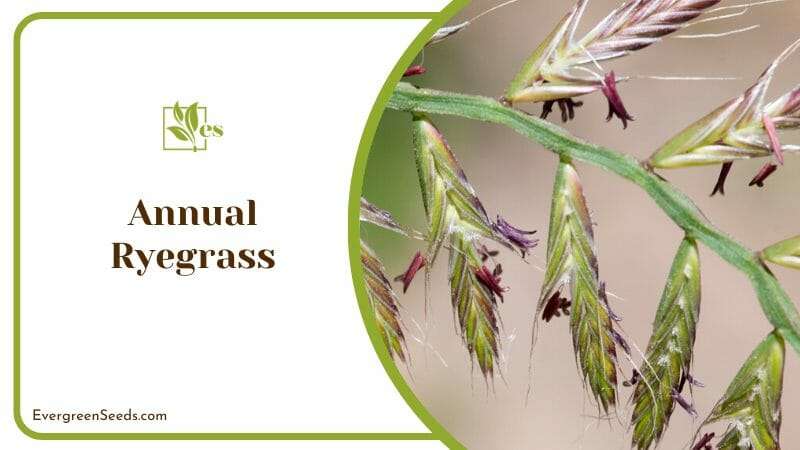
The seed embryo is visible from the seed shell, and unlike wheat, annual ryegrass will produce a high amount of seeds, which makes it an increasingly expensive crop to grow.
Unlike many other plants on this list, if you stumble upon one of these, you’d probably want to mistake it for wheat and try to propagate it in the field!
8. Kentucky Bluegrass
Kentucky bluegrass looks like wheat and is a perennial grass, mostly grown as lawn grass for its winter-hardy properties. This grass produces very rich, beautiful, and durable lawns.
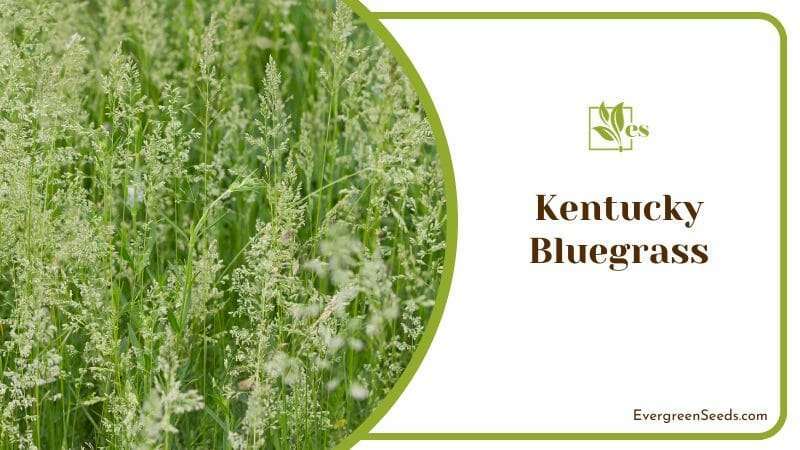
Be careful, though, these plants can’t make it on their own, and you’ll have to employ proper lawn maintenance. You’d want to create a yearly care calendar for this one.
Kentucky bluegrass looks like wheat when it has full-grown seeds. The plant isn’t growing as high as wheat, but the heads are similar to those found on wheat plants. However, you may want to consider harvesting some of those seeds and germinating them for a fuller lawn next year! Make sure not to confuse Kentucky bluegrass with Bermuda grass.
9. Foxtail Barley
This funky-looking thing is a member of a more popular beer-making crop family but is grown for altogether different purposes. Foxtail barley can be a pest in your garden, as it can hurt the grazing animals with its’ sharp hairs found on the buds.
They can become hard to eradicate once they become established in the garden, so if you spot them, it’s probably the best to go for the lawn mower.
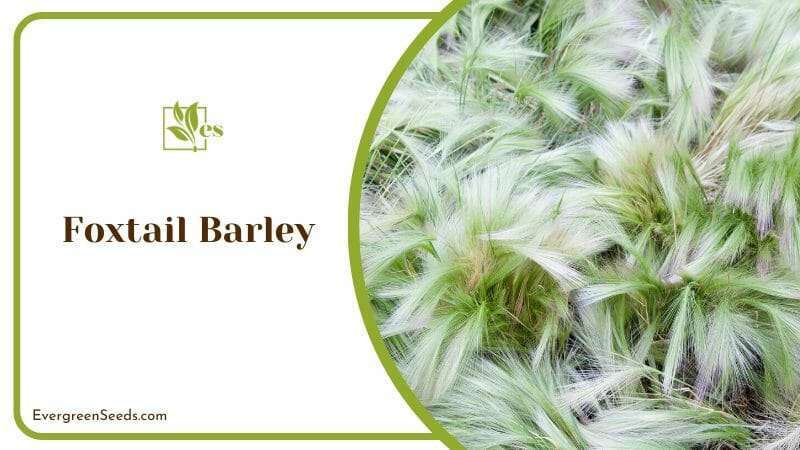
These plants have many questioning if there’s wheat around, but you’ll distinguish this one from wheat pretty easily. Foxtail barley’s spikelets are generally thinner than wheat heads, and the seeds are much smaller, often leaning to one side, forming a curve in the plant.
When the heads are much younger, they’re soft and sometimes take on a pink hue. They take a more wheat-like look towards the end of the growing season, but hopefully, you’ll have had these pesky plants removed by then.
10. Feather Finger Grass
Similar to couch grass or even reed, feather finger grass looks a lot like wheat! This one is considered an invasive species in America and establishes itself fairly quickly on an unsuspecting farmer. The feather finger grass usually grows on areas that have been disturbed or neglected, such as railroads and abandoned construction sites, but also nearby gardens and lawns.
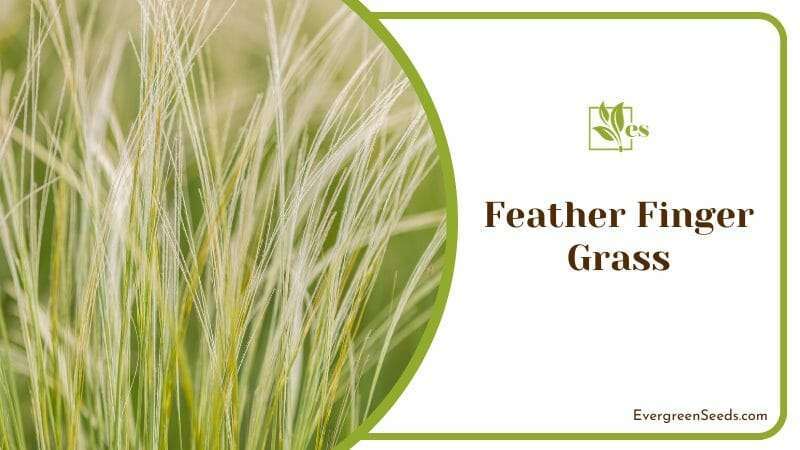
Feather finger grass is similar in height to wheat, growing around a foot in the air. However, you’ll recognize it with no problem – a single stem of the finger grass can have more than three heads growing on top.
The wheat plant usually only grows one head, which is a pretty obvious red flag. As with other pesky plants, you should look to destroy and remove this grass as soon as you spot it on the field, as it can quickly take over the entire area.
11. Johnson Grass
Here’s a giant of the list. Johnson grass is an invasive specie of perennial grasses native to Africa and Asia, although these days, the grass exists all over the world. This grass is considered a pest because it can quickly spread and overtake other cultures you may be growing.
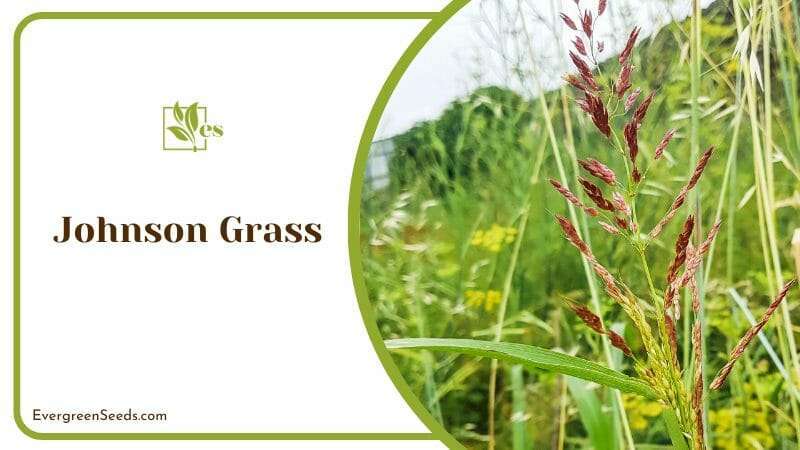
However, there are some great benefits to growing Johnson grass – it behaves well being a turf erosion control plant and can serve as livestock food (goats love to munch on it!).
Johnson grass grows up to eight feet tall. In the late summer, it forms purple spikes where the seeds are. These flower-like clumps will make it obvious that you aren’t dealing with wheat, so you may want to employ lawn maintenance to prevent it from overspreading on the terrain. However, keep some of the Johnson grass untouched for the above-mentioned benefits.
12. Pampas Grass
Here’s the beauty of the list. Pampas grass is a beautiful ornamental plant from the Poaceae family of grasses. This one is widely popular as a decorative plant in many gardens. Pampas plants are native to South America, but they’ve reached global popularity.
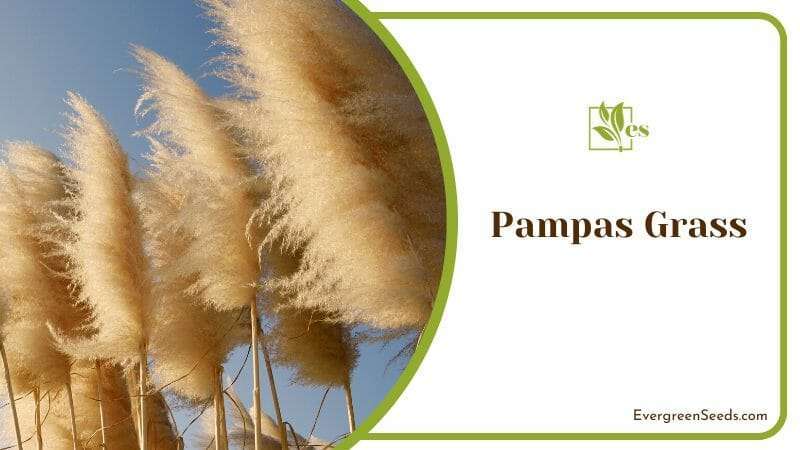
Unlike wheat, pampas grass can reach heights of up to 10 feet. Although it has soft heads, be careful of their sharp stems and consider planting them away from children’s reach. Their heads look like overgrown wheat heads that survived for an entire year! Also, try to keep your pampas further from the house as possible, as they can attract pests.


